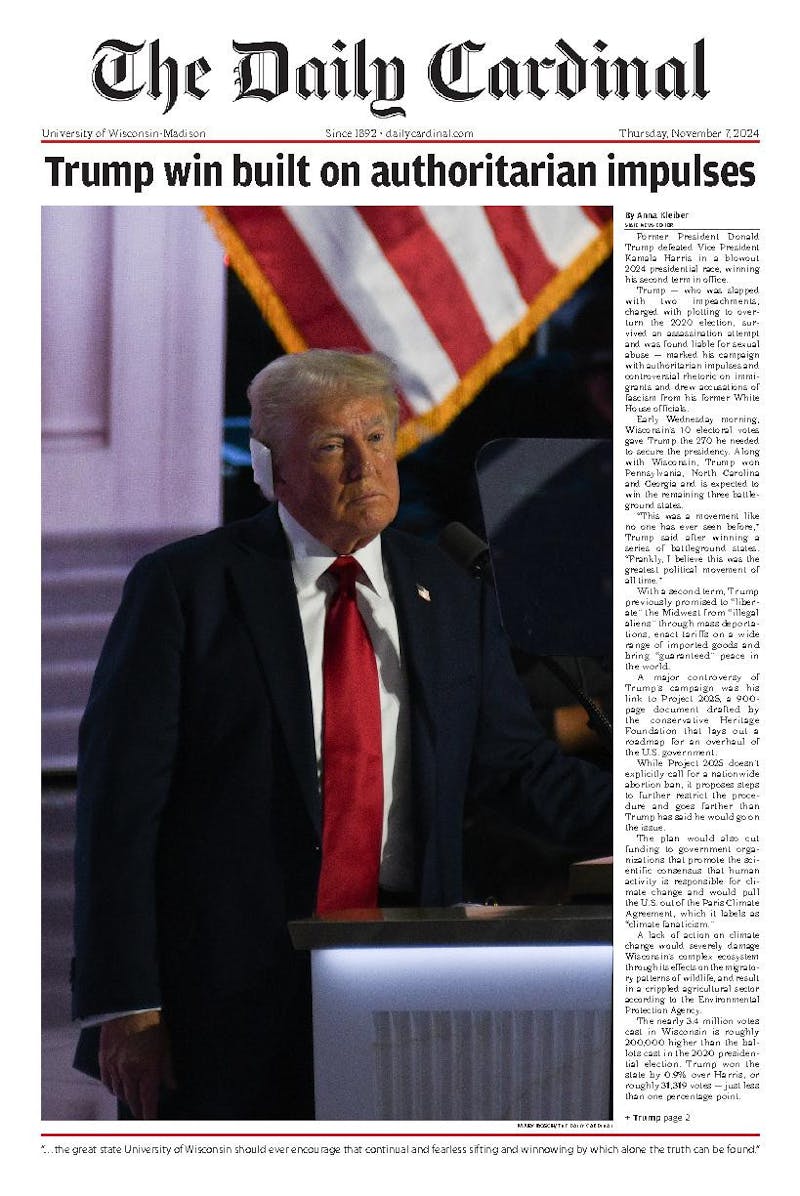The days are growing shorter and the wind is regaining its winter ferocity in Madison, intensifying the hunger and aggravating the despair of the capital city's less fortunate residents. Behind the counter at Grace Episcopal Church's, 116 W. Washington Ave., food pantry, Jim and Hanna Bailey greet those in need with provisions, warm smiles and kind words.
\In a very small way, we're helping people who are hurting,"" Bailey said.
In a coordinated effort to raise awareness, educate and encourage committed involvement against poverty, the National Coalition for the Homeless and National Student Campaign Against Hunger & Homelessness is sponsoring its annual National Hunger and Homelessness Awareness Week, from November 14 to 20. On Friday, Nov. 19, members of Wisconsin Public Interest Research Group and UW-Madison students will camp out on Library Mall in an effort to bring attention to the plight of the homeless.
UW-Madison emeritus Professor of social work Mona Wasow characterized the broad continuum of homelessness.
""You have everything from people that are just temporally homeless for a few weeks to folks that are chronically homeless that have been for months, if not years,"" Wasow said.
Though figures precisely quantifying Madison's homeless population can be difficult to obtain, Deedra Atkinson, United Way of Dane County's Community Impact senior vice president, said last year 3,163 people were counted in Madison metropolitan area homeless shelters. Atkinson and her colleague, Vice President of Community Building Nan Cnare, have conducted extensive research regarding homeless population trends and migration patterns.
Domestic conflict and violence were most frequently cited as reasons for homelessness in Dane County, resulting in a shift in Madison's homeless demographic from older, single men to younger women and families. According to Atkinson, the number of homeless students in the Madison metropolitan school district nearly doubled over the past seven years, from 300 in 1997 to 583 in 2003.
Equipped with her results, Atkinson said she wished to correct what she contends is a common misconception held by other Madisonians that city social welfare programs attract impoverished individuals from the Chicago area and elsewhere.
""There is a big myth that homeless people move to Madison because of our homeless shelter system, and we're not finding that at all,"" Atkinson said.
Atkinson argued because 50 percent of last year's homeless in the city shelters had lived in Madison for more than a year and 84 percent of migrants from Chicago possess incomes above the poverty line, the population must be regarded as a municipal responsibility.
""We're very capable of growing our own homeless,"" Atkinson commented.
Both Wasow and Atkinson also contend homelessness correlates to unavailable low-income housing, rather than unemployment. Many, Wasow said, work multiple jobs to support themselves, but simply cannot afford to pay for apartments. According to Atkinson, the average rent in Dane County is over $100 more than the state average of $540 per month.
""If you are making $15,000 or less [per year], by the guidelines of putting a third of your salary into housing, you be should spending 350 or less per month. We don't have those kinds of units available,"" Atkinson stated, adding the affordable housing gap is believed to be 21,000 units.
Wasow expressed dissatisfaction with what she described the growing disparity between the wealthy and poor, and stressed increased understanding will lead to proactive social reform.
""I think it is an absolute shame of the whole country, that the richest country of the world, let alone a relatively upper-middle class city like this, has so many homeless people,"" Wasow said. ""I talk about this all the time with my students, that all of this cruelty and so forth is out of ignorance, and that our big job is to educate people and get some policy changes.""
Back at Grace Episcopal Church, Jim Bailey found the inspiration to aid others through his religious convictions.
""There is a motif that runs through the Bible of helping widows, orphans and the poor; in other words, people who can't help themselves. I don't think society remembers that,"" Bailey said.





